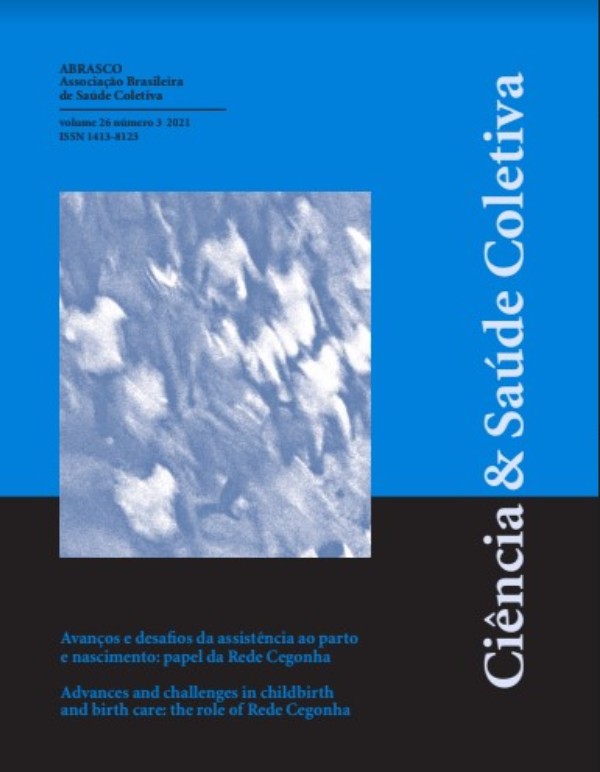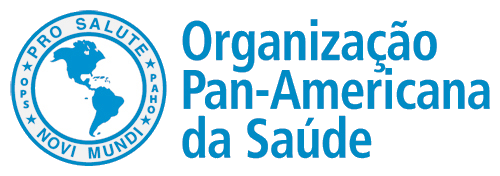Resumo (abstract):
The objective of this study was to evaluate the availability of information about sugar quantity and identify the position of the sugar in the ingredients list in industrialized foods. This is a cross-sectional study, which analyzed all the processed foods, diet, light and zero marketed in a large hypermarket, which contain the words sugar or sucrose in the ingredients list. The presence of the declaration of quantity and position of the sugar in the ingredients list were recorded after observation of the label. The information about quantity of sugar was also requested to food industries by phone or email. 2200 foods were analyzed, being 2164 (98.4%) traditional and 36 (1.6%) diet, light and zero, in which the declaration of sugar quantity information was observed in only 14.4% and 13.9%, respectively (p = 0.84). Of the 156 companies contacted, only 7.7% (n = 12) provided the requested information. Among the traditional foods, 75.8% have the sugar in the first three positions of the list of ingredients, as in diet, light and zero, 77.8% (p = 0.93). It is concluded that the sugar is the main ingredient in many of the foods analyzed and that the availability of sugar quantity information is low.
Palavras-chave (keywords):
Sugars; Industrialized Foods; Nutritional Labeling.
Ler versão inglês (english version)
Conteúdo (article):
Provision of information on the amount of sugar in processed foods.
Abbreviated title: Sugar in processed foods.
Camila Cremonezi Japur1,4; Dyessa Cardoso Bernardes Assunção2; Raíssa Aparecida Borges Batista2; Fernanda Rodrigues de Oliveira Penaforte3,4.
1Divisão de Nutrição e Metabolismo, Departamento de Ciências da Saúde, Faculdade de Medicina de Ribeirão Preto, Universidade de São Paulo.
2Nutricionistas graduadas pelo Curso de Nutrição, Faculdade de Medicina, Universidade Federal de Uberlândia.
3Departamento de Nutrição, Instituto de Ciências da Saúde, Universidade Federal do Triângulo Mineiro.
4Laboratório de Práticas e Comportamento Alimentares – PrátiCA, Curso de Nutrição e Metabolismo, Faculdade de Medicina de Ribeirão Preto, Universidade de São Paulo.
Camila Cremonezi Japur camilajapur@usp.br; ORCID: 0000-0003-0513-1758.
Dyessa Cardoso Bernardes Assunção: dyessa.cardoso@gmail.com; ORCID: 0000-0003-4711-7508.
Raíssa Aparecida Borges Batista: raissaborges26@hotmail.com; ORCID: 0000-0002-9928-5872.
Fernanda Rodrigues de Oliveira Penaforte: fernandaropenaforte@gmail.com; ORCID: 0000-0001-8483-1562.
Autor correspondente: Camila Cremonezi Japur – camilajapur@usp.br
Av. Bandeirantes, 3900 – Monte Alegre – Ribeirão Preto – SP – Brasil. CEP: 14049-900.
ABSTRACT
The objective of this study was to assess the provision of information on the amount of sugar and identify the position of sugar in the list of ingredients of processed foods. A cross-sectional study was conducted to analyze all processed traditional and diet/light/zero food products sold in a hypermarket containing the word sugar or sucrose in the list of ingredients. The food labels were read and the position of sugar on the list of ingredients and presence, or absence, of information on the amount of sugar in the nutrition facts table were recorded. Information on the amount of sugar was also requested from the manufacturers by e-mail or telephone. A total of 2,200 food products were assessed, 2,164 (98.4%) of which were traditional foods and 36 (1.6%) diet/light/zero foods. The amount of sugar was declared in only 14.4% and 13.9% of these products, respectively (p=0.84). Only 7.7% (n=12) of the 156 companies contacted provided the requested information. Sugar was present in the first three positions of the list of ingredients in 75.8% of the traditional foods and 77.8% of the diet/light/zero foods (p=0.93). The data show that sugar was the main ingredient in the majority of the food products analyzed and that the level of provision of information on the amount of sugar is low.
Keywords: Sugars; Industrialized Foods; Nutritional Labeling.
INTRODUCTION
Recent decades have witnessed various changes in eating habits in Brazil and around the world. There has been an increase in the consumption of high energy density, fat, sugar and salt (ultra-processed) foods, together with a reduction in the consumption of foods that are good sources of fiber and micronutrients. There is a strong association between these changes and increased prevalence of noncommunicable diseases (NCDs), such as diabetes mellitus, obesity, systemic hypertension, cardiovascular diseases, and cancer1–6.
Epidemiological evidence suggests that high intakes of added sugar is a risk factor for NCDs7–11. The term added or “free sugars” refers to all sugars added to drinks and food during preparation or industrial processing9,12.
In 2015, the World Health Organization (WHO) issued a guideline that recommends reducing the intake of free sugars in both adults and children to less than 10% of total energy intake (strong recommendation) and a further reduction to below 5% of total energy intake (conditional recommendation)9. The following year, the Pan American Health Organization proposed that processed and ultra-processed foods should be considered high in sugars when the amount of free sugars is ≥ 10% of the total energy value (kcal) of the recommended portion size13. The effective implementation of these recommendations requires clear food labeling that provides information on the amount of free sugars contained in the product.
In Brazil, while the declaration of the energy and macronutrient content on food labels is mandatory for processed foods, the declaration of the amount of sugar contained in the food remains voluntary14,15. The lack of such information makes it difficult for consumers to make conscious food choices and control sugar intake. The aim of the present study was therefore to assess the provision of information on the amount of sugar and identify the position of sugar in the list of ingredients of sweet and savory traditional and diet/light/zero foods containing sugar.
METHODS
A cross-sectional study was conducted of processed traditional and diet/light/zero foods sold in a hypermarket in Uberlândia, Minas Gerais. The store was deliberately selected because, according to the Brazilian Supermarket Association, it is the second largest supermarket chain in the country and offers a wide range of processed products16. Prior written authorization was obtained from the store manager.
The study was conducted in 2015 in two stages. First, we read the labels of all available food products in the store. All products containing the word sugar or sucrose in the list of ingredients were included in the study. Different sized products of the same brand, composition, and flavor were excluded. Only the terms sugar and sucrose were used, instead of other types of sugar (such as fructose, liquid glucose, maltodextrin, dextrose, corn syrup, fructose syrup, agave syrup, guarana syrup, lactose, polydextrose, galapolydextrose, maltose, galactose, fruit juice concentrate, malt extract, mannitol, xylitol, invert sugar, muscovado sugar, starch, and sorbitol), because they refer to table sugar, the most widely known and commonly used type of sugar.
The following particulars of the products were recorded: technical name; product name; brand; customer support information; position of sucrose and/or sugar on the list of ingredients; and presence, or absence, of information on the amount of sugar in the nutrition facts table.
In the second stage, the food companies were contacted by telephone (when it was freephone), email, or via the customer service website and asked to provide information on the amount of sugar per portion or per 100g.
The selected foods were separated into two groups: traditional foods and diet/light/zero foods. Each group was divided into 15 food categories based on the Brazilian Food Categorization System created by Brazil\'s National Health Surveillance Agency, ANVISA17. The term diet is used for special purpose foods used for nutrient restriction (total or insignificant amounts), controlling weight, or low sugar diets15. According to ANVISA Resolution 54/2012, the term “light” may be used on the food label as supplementary nutrition information when the food contains 25% less of a nutrient than the traditional food or when its absolute content is below the “low” threshold, while the term “zero” may be used when the product “does not contain” the nutrient18.
After data collection and entry, the data was checked by two different researchers and descriptive statistical analysis was performed. The prevalence of the declaration of the amount of sugar and presence of sugar in the first three positions of the list of ingredients was compared between the two groups using the chi-squared test, adopting a significance level of 0.05. Statistical analysis was performed using GraphPad InStat version 3.05.
RESULTS
We assessed 2,200 processed food products containing the word sugar or sucrose in the list of ingredients, 98% of which (n=2,164) were traditional foods and 1.6% diet/light/zero foods (n=36).
Information on the amount of sugar was present on the labels of 14.4% of the traditional foods and 13.9% of the diet/light/zero foods (p=0.84). The prevalence of the declaration of the amount of sugar in the traditional foods group was greatest in the following food categories: candies and confections (35.3%), pre-prepared milk mixtures (26.5%), cereals and/or cereal products (22.9%), snacks (20.4%), and bread products and cookies (19.8%). In the diet/light/zero foods group, the amount of sugar was declared only in the following categories: pre-prepared milk mixtures (50%) and bread products and cookies (30%), as shown in Table 1.
(Table 1)
Sugar was present in the first three positions of the list of ingredients in 75.8% (1,668) of the food products overall, 75.8% of the traditional foods, and 77.8% of the diet/light/zero foods (p = 0.93), as shown in Tables 2 and 3. The data shows that 29.1% of the traditional foods (n=629) and 8.3% of the diet/light/zero foods (n=3) were savory. The analysis of savory foods showed that sugar was present in the first three positions of the list of ingredients in 30% (n=189) of the traditional foods and 66.7% (n=2) of the diet/light/zero foods, while the analysis of sweet foods shows that sugar was present in the first three positions in 94.5% of traditional foods and 78.8% of the diet/light/zero foods. An analysis of the two food groups together shows that sugar was present in the first three positions in 88.5% of sweet foods and 30.2% of savory foods.
(Table 2)
(Table 3)
One hundred and fifty-six of the 257 manufacturers of the products analyzed by this study were contacted, of which only 12 (7.7%) provided the information requested on the amount of sugar per portion or per 100g. Of the 144 (92.3%) remaining companies, 63 (43.8%) reported that the information was a trade secret because it was part of the formula of the product, 32 (22.2%) answered that since the declaration of sugars in nutrition labeling is not mandatory these components are not analyzed separately, and 49 (34%) failed to reply.
DISCUSSION
The findings show that the majority of the processed foods analyzed by this study did not provide information on the amount of sugar in the nutrition facts tables. However, sugar was present in the first three positions of the list of ingredients, and therefore a prominent ingredient, in the majority of both traditional and diet/light/zero food products. Approximately 30% of the foods containing sugar were savory, meaning that it is not clear to the consumer that these products contain sugar. In addition to not providing information on the amount of sugar on food labels (despite including sugar as a main ingredient), the majority of companies contacted failed to provide information on the amount of sugar per portion or per 100g when requested.
Brazil’s 2008-2009 Household Budget Survey revealed that 61.3% of the Brazilian population show excessive sugar intake due to the addition of sugar to foods and consumption of processed and ultra-processed foods19. It is estimated that ultra-processed foods that are high in sugar, fat and sodium make up 21.5% of the diet of the Brazilian population20. The high level of consumption of ultra-processed foods, together with the general lack of information on the sugar contained in food products identified by this study, suggests that people are unknowingly eating large amounts of sugars. This highlights the importance of the mandatory declaration of the amount of free sugars on food labels for processed foods.
The Brazilian government’s dietary guidelines warn of the undesirable consequences of high levels of consumption of processed and ultra-processed foods21 and efforts have been made to reduce the amount of sugar in processed foods through an agreement between the Ministry of Health and food industry22. Other attempts include regulations on the supply, advertising, and sale of high-sugar foods requiring food companies to declare that the consumption of large quantities of sugar results in increased risk of obesity and other NCDs23. Furthermore, in Chile and Colombia, laws were introduced in 2012 banning the sale of high-sugar foods in schools24.
Sugar is used by the food industry to improve the palatability of food to attract the consumer and as a food additive for coloring and flavoring and as an antioxidant, preservative, emulsifier, sweetener, humectant, flavor enhancer, enzyme or nutrient22. This may explain the presence of sugar as a main ingredient both in sweet and savory foods in this study.
Besides the low prevalence of the declaration of the amount of sugar on food labels, the majority of food companies (92.3%) failed to provide information when requested. While the legislation on nutrition labeling in Brazil does not provide for the mandatory declaration of information on the amount of sugar in foods14, Brazil’s Consumer Protection Code states that “adequate and clear information about products and services, with correct specification of quantity, characteristics, composition, quality and price, as well as the risks posed” is a basic consumer right25.
The absence of information on the amount of sugar contained in processed foods means it is not possible to calculate the amount of sugar that people actually consume, hindering compliance with the WHO recommendations on the intake of free sugars in children and adults outlined above9.
The fact that sugar is in the first three positions of the list of ingredients of certain savory foods, coupled with the lack of information on the sugar content on food labels, means that consumers can be misled into making bad choices. In some of the foods analyzed by this study, such as pastas, sausages and hams and ready-seasoned meat, sauces, savory snacks, and some ready meals, sugar was one of the main ingredients. The presence of sugar in savory foods may be justified by the technological functions it performs22.
Another factor that can lead to bad food choices induced by the lack of clear information on food labels is that the majority of people believe that diet/light/zero foods have lower or zero sugar, calorie, and nutrient content. The declaration of information on sugar on food labels is only mandatory for diet/light/zero foods when they do not contain sugar or free sugars18. In other words, for products containing sugar, such as those assessed by the present study, the declaration of information on sugar on the food label is not mandatory, despite the fact that they are sold as diet, light and zero products15.
However, the Mercosur has developed technical regulations on nutrition labeling of prepackaged foods and supplementary nutrition information. These regulations apply to foods produced and sold in Argentina, Brazil, Uruguay, and Paraguay and provide that the amount of sugar should be declared in the nutrition facts tables of foods that declare nutritional properties related to carbohydrates (supplementary nutrition information, such as light foods related to sugar reduction for example)26,27. Furthermore, the declaration of the amount of sugar on the food label is mandatory for all processed foods in the European Union and United States28,29.
One of the limitations of this study is that the data on the presence of sugar in processed foods may be underestimated because only products containing the word sugar or sucrose in the list of ingredients were included, excluding other types of sugars (monosaccharides and disaccharides).
CONCLUSION
The provision of information on the amount of sugar in processed foods is poor both on food labels (only 15% of the products declared the amount or sugar per portion) and via customer support services (92% of companies failed to provide the information requested). These findings are particularly worrying considering that sugar was present in the first three positions of the list of ingredients, and therefore a main ingredient, in 88.5% of the sweet foods and 30.2% of the savory foods analyzed by this study.
Acknowledgements: We are grateful to the National Council for Scientific and Technological Development (CNPq, acronym in Portuguese) for providing a research grant and to the manager of the hypermarket who kindly authorized data collection on the premises.
REFERÊNCIAS
1. Maire B, Lioret S, Gartner A, Delpeuch F. Nutritional transition and non-communicable diet-related chronic diseases in developing countries. Sante 2002;12(1):45–55.
2. Schmidt MI, Duncan BB, Azevedo e Silva G, Menezes AM, Monteiro CA, Barreto SM, et al. Chronic non-communicable diseases in Brazil: burden and current challenges. Lancet 2011;377(9781):1949–61.
3. Louzada ML da C, Baraldi LG, Steele EM, Martins APB, Canella DS, Moubarac J-C, et al. Consumption of ultra-processed foods and obesity in Brazilian adolescents and adults. Prev Med 2015;81:9–15.
4. Costa CS, Del-Ponte B, Assunção MCF, Santos IS. Consumption of ultra-processed foods and body fat during childhood and adolescence: a systematic review. Public Health Nutr 2018;21(01):148–59.
5. Fiolet T, Srour B, Sellem L, Kesse-Guyot E, Allès B, Méjean C, et al. Consumption of ultra-processed foods and cancer risk: results from NutriNet-Santé prospective cohort. BMJ 2018;360:k322.
6. Rauber F, da Costa Louzada ML, Steele E, Millett C, Monteiro CA, Levy RB. Ultra-Processed Food Consumption and Chronic Non-Communicable Diseases-Related Dietary Nutrient Profile in the UK (2008–2014). Nutrients 2018;10(5):587.
7. Basu S, McKee M, Galea G, Stuckler D. Relationship of soft drink consumption to global overweight, obesity, and diabetes: a cross-national analysis of 75 countries. Am J Public Health 2013;103(11):2071–7.
8. Siervo M, Montagnese C, Mathers JC, Soroka KR, Stephan BC, Wells JC. Sugar consumption and global prevalence of obesity and hypertension: an ecological analysis. Public Health Nutr 2014;17(03):587–96.
9. World Health Organization. Guideline: Sugars intake for adults and children. Geneva: World Health Organization; 2015.
10. Scapin T, Fernandes AC, Proença RP da C. Added sugars: Definitions, classifications, metabolism and health implications. Rev Nutr 2017;30(5):663–77.
11. Vos MB, Kaar JL, Welsh JA, Van Horn LV, Feig DI, Anderson CAM, Patel MJ, Cruz Munos J, Krebs NF, Xanthakos SA, Johnson RK, American Heart Association Nutrition Committee of the Council on Lifestyle and Cardiometabolic Health, Council on Clinical Cardiology, Council on Cardiovascular Disease in the Young, Council on Cardiovascular and Stroke Nursing, Council on Epidemiology and Prevention, Council on Functional Genomics and Translational Biology, and Council on Hypertension. Added Sugars and Cardiovascular Disease Risk in Children: A Scientific Statement From the American Heart Association. Circulation 2017;135(19).
12. Institute of Medicine. Dietary Reference Intakes for Energy, Carbohydrate, Fiber, Fat, Fatty Acids, Cholesterol, Protein, and Amino Acids (Macronutrients) Washington, D.C.: National Academies Press; 2005.
13. Organização Pan Americana de Saúde - OPAS. Modelo de Perfil Nutricional da Organização Pan-Americana da Saúde. OPAS; 2016.
14. Brasil. Secretaria de Vigilância Sanitária (Anvisa). Resolução RDC n° 360, de 23 de dezembro de 2003. Regulamento técnico sobre rotulagem de alimentos embalados. Diário Oficial da União 2003; 23 dez.
15. Brasil. Secretaria de Vigilância Sanitária (Anvisa). Portaria n° 29, de 13 de janeiro de 1998. Regulamento técnico para fixação de identidade e qualidade de alimentos para fins especiais. Diário Oficial da União 1998; 29 jan.
16. Associação Brasileira de Supermercados. Ranking ABRAS /SuperHiper 2014.
17. Brasil. Secretaria de Vigilância Sanitária (Anvisa). Guia de Procedimentos para Pedidos de Inclusão e Extensão de Uso de Aditivos Alimentares e Coadjuvantes de Tecnologia de Fabricação na Legislação Brasileira. Brasília, DF; 2015.
18. Brasil. Secretaria de Vigilância Sanitária (Anvisa). Resolução RDC nº 54 de 12 de novembro de 2012. Regulamento técnico sobre informação nutricional complementar. Diário Oficial da União 2012; 12 nov.
19. Brasil. Instituto Brasileiro de Geografia e Estatística. Coordenação de Trabalho e Rendimento. Pesquisa de orçamentos familiares 2008-2009: análise do consumo alimentar pessoal no Brasil. Rio de Janeiro; 2011.
20. Louzada ML da C, Martins APB, Canella DS, Baraldi LG, Levy RB, Claro RM, Moubarac JC, Cannon G, Monteiro CA. Ultra-processed foods and the nutritional dietary profile in Brazil. Rev Saude Publica 2015;49(38).
21. Brasil. Ministério da Saúde. Guia Alimentar para a População Brasileira. 2o ed. Brasília; 2014.
22. Brasil. Ministério da Saúde. Plano de Redução de açúcar em alimentos industrializados. Brasília; 2017.
23. Brasil. Secretaria de Vigilância Sanitária (Anvisa). Resolução RDC no24, de 15 de junho de 2010. Dispõe sobre a oferta, propaganda, publicidade, informação e outras práticas correlatas cujo objetivo seja a divulgação e a promoção comercial de alimentos considerados com quantidades elevadas de açúcar, de gordura saturada, de gordura trans, de sódio, e de bebidas com baixo teor nutricional. Diário Oficial da União 2010; 24 jun.
24. Fraser B. Latin American countries crack down on junk food. Lancet 2013;382(9890):385–6.
25. Brasil. Lei no 8078, de 11 de setembro de 1990. Dispõe sobre a proteção do consumidor e dá outras providências. Diário Oficial da União 1990; 11 set.
26. MERCOSUL. MERCOSUL/GMC/RES No 46/03. Regulamento Técnico Mercosul sobre Rotulagem Nutricional de Alimentos Embalados. Mercosul; 2003.
27. MERCOSUL. MERCOSUL/GMC/RES. No 01/12 Regulamento Técnico Mercosul sobre Informação Nutricional Complementar (Declarações de Propriedades Nutricionais). Mercosul; 2012.
28. Food and Drug Administration. Federal Register - Food Labeling: Revision of the Nutrition and Supplement Facts Labels. FDA; 2016.
29. European Parliament. Regulation (EU) n°1169/2011 of the European Parliament and of the Council of 25 October 2011 on the provision of food information to consumers. EU; 2011.
Acessar Revista no Scielo












